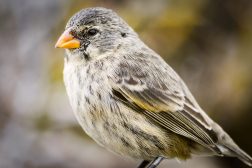Infusoria
(Science: zoology) One of the classes of protozoa, including a large number of species, all of minute size.
They are found in all seas, lakes, ponds, and streams, as well as in infusions of organic matter exposed to the air. They are distinguished by having vibrating lashes or cilia, with which they obtain their food and swim about.They are devided into the orders flagellata, Ciliata, and Tentaculifera. See these words in the vocabulary. Formely the term infusoria was applied to all microscopic organisms found in water, including many minute plants, belonging to the diatoms, as well as minute animals belonging to various classes, as the rotifera, which are worms; and the rhizopoda, which constitute a distinct class of protozoa. Fossil infusoria are mostly the siliceous shells of diatoms; sometimes they are siliceous skeletons of Radiolaria, or the calcareous shells of Foraminifera.
Origin: NL.; so called because found in infusions which are left exposed to the air for a time. See infuse.
Dictionary > Infusoria
You will also like...

Population Growth and Survivorship
This lesson looks at population attributes, regulation, and growth. It also covers population genetics, particularly gen..

Freshwater Producers and Consumers
Freshwater ecosystem is comprised of four major constituents, namely elements and compounds, plants, consumers, and deco..

Still Freshwater & Plants
Plants in lentic habitats have features not found in terrestrial plants. They acquired these features as they adapt to t..

Darwin and Natural Selection
This tutorial investigates the genetic diversity in more detail. It also delineates how certain alleles are favored over..

Homeostatic Mechanisms and Cellular Communication
Homeostasis is the relatively stable conditions of the internal environment that result from compensatory regulatory res..

A Balanced Diet – Minerals and Proteins
Proteins and minerals can be derived from various dietary sources. They are essential for the proper growth and developm..

